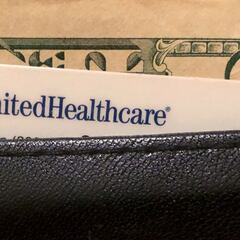Who needs Medicare Part A, B, C and D?
The federal healthcare programme is divided into four separate plans, each with its own eligibility requirements and areas of coverage to suit patients' needs.


Since 1965 Medicare has offered health insurance programmes, heavily subsidised by the federal government, for those aged 65 and older or younger people with certain disabilities or ailments. A range of treatments and services are included in the broad programmes, but they are divided into four separate plans with different eligibility requirements.
Read more
- Medicare enrollment: dates, requirements, website, and 2021 prices
- What are the 2022 Medicare premiums?
- When does medicare open enrollment begin? What is the deadline and how do I enroll?
The four plans are most commonly refeed to as Parts A, B, C and D. Each part covers a different facet of healthcare-related costs. Medicare Parts A and B are overseen by the Centers for Medicare and Medicaid Services (CMS), while Medicare Parts C and D are administrated by private insurance companies.
Here’s how those four plans differ…
Medicare Part A
Recipients must be: Aged 65 or older; or disabled; or suffering from End-Stage Renal Disease (ESRD)
Part A relates to hospital inpatient services, helping to cover the cost of hospital, nursing facility and hospice services. This coverage will typically also include any supplies and pharmaceuticals required while the patient is in hospital. It can even cover physical and occupational therapy required for homebound patients, and counselling for the terminally ill.
Medicare Part B
Recipients must be: Aged 65 or older; or disabled; or suffering from End-Stage Renal Disease (ESRD)
For outpatient coverage, meaning services administered outside of the hospital, Part B will cover most of the expenses. Home visits from a medical professional, testing services and some equipment costs can be covered, as can the use of an ambulance in emergencies.
CBS News poll:
— Kyle Griffin (@kylegriffin1) October 11, 2021
88% of Americans support federal funding for lowering prescription drug prices
84% support federal funding for Medicare coverage for dental/eye/hearing
73% support federal funding for paid family/medical leave
67% support federal funding for universal pre-K
Medicare Part C
Recipients must be: Already enrolled in Medicare Parts A and B; and living in an area serviced by a Medicare Advantage insurance provider accepting new users
Part C, also known as Medicare Advantage (MA), is provided by certain Medicare-approved private companies and expands on the coverage included in Parts A and B. It includes some additional prescription drugs, as well as dental, vision, and many other benefits.
Medicare Part D
Related stories

Medicare enrollment: dates, requirements, website, and 2021 prices

Will all Social Security recipients receive the new increase of $1,100?
Recipients must be: Eligible to enrol in Medicare Parts A and B; or in receipt of Social Security disability payments for at least two years; or aged below 20 with an ESRD diagnosis and at least one parent eligible to receive Social Security payments
The last of the Medicare plans relates specifically to pharmaceutical prices. The price of certain drugs can be extortionate and many are not available free-of-charge on the traditional Medicare programmes. Part D charges an additional insurance premium but offers discounted pharmaceuticals to those who are eligible.